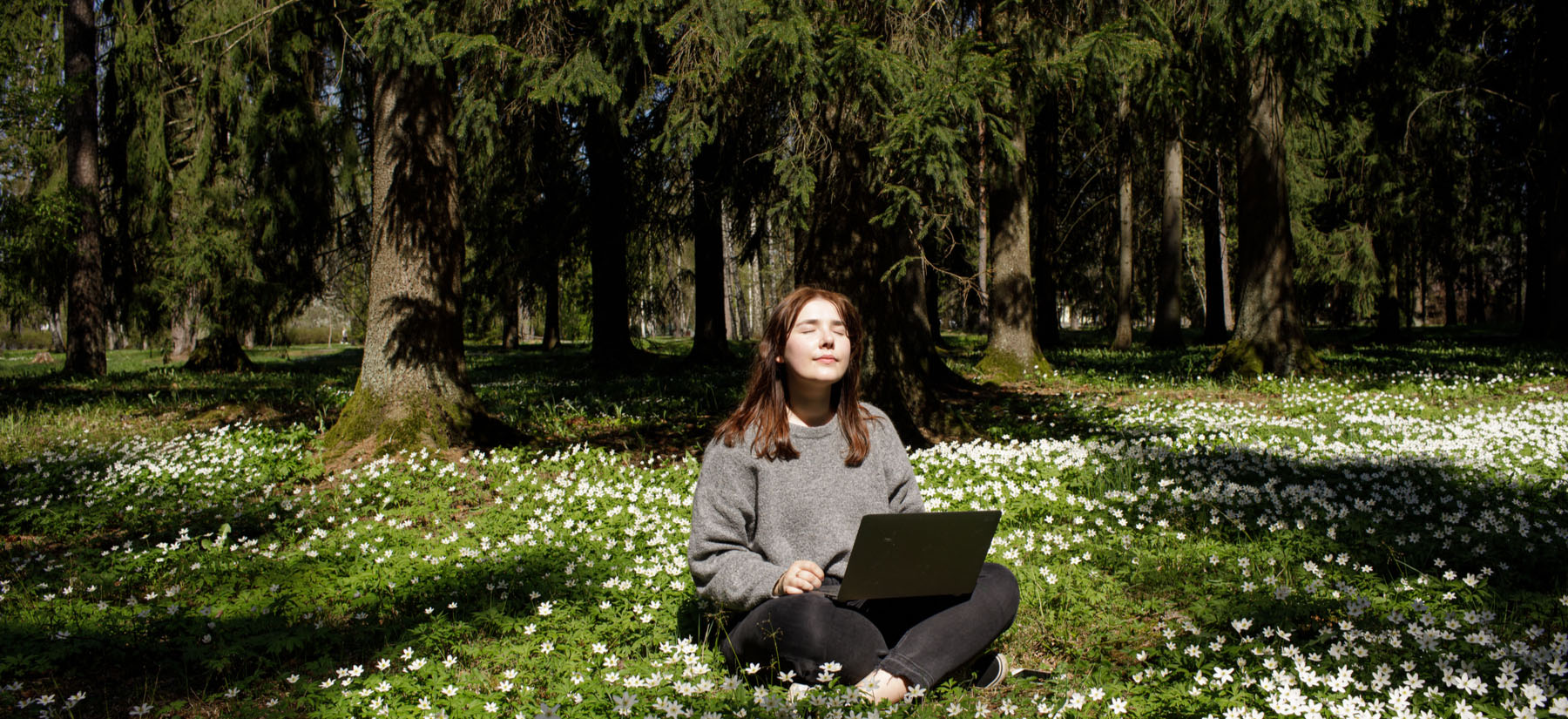Past research studies have shown that exposure to nature (e.g., trees, vegetation, beaches, plants, foliage, bodies of water, etc.) can help restore cognitive processing, reduce stress, and improve overall mood and well-being. The benefits of nature environments can also translate to enhanced workplace and job satisfaction, and fewer sick days. But does nature’s Midas touch translate through screens?
This is the question we at Klick Applied Sciences address in our latest research study published in Thinking Skills and Creativity. In today’s modern, virtual world where 3.3 trillion meeting minutes are hosted on Zoom each year, it’s essential to build strategies that overcome “Zoom fatigue” and keep the creative juices flowing. The surprising and easy-to-implement findings have important real-world implications for boosting productivity and engagement among marketing professionals.
But First, What’s the Deal with Nature?
One main theory is that humans evolved in natural environments that capture attention effortlessly, allowing cognition and emotions to easily recover and replenish. Nature is perceived to be pleasant, resulting in higher levels of positive mood and reduced levels of stress. By contrast, urban city environments (e.g., bright lights, tall buildings, loud vehicles, construction sounds) are perceived as more threatening and cognitively taxing because they require direct attention to the surrounding stimuli. Thus, urban city environments are more depleting and less restorative than nature environments.
Perhaps, one of the most important aspects of past research is that the benefits of nature can be triggered without the need of real-life environments. That is, nature can produce physical, emotional, and cognitive benefits through photographs, videos, paintings on a wall, potted plants in a room, and virtual reality.
Our research team has previously shown that creativity was enhanced when participants viewed nature using virtual reality, and also in real life. We have since extended that research, by showing that nature virtual backgrounds elicit heightened creativity during videoconferencing.
What Is Creativity and Why Is it Important?
Creativity generally refers to the process of generating novel and useful ideas, thinking flexibly across a wide range of distinct topics, and producing unique solutions to problems. Creativity is related with many real-world benefits, including healthy psychological well-being, maintaining romantic relationships, as well as school and workplace success.
Thus, the merits of creativity deserve to be rewarded and valued in society for its potential in overall health and well-being. Employers should emphasize creative thinking in their staff to think out-of-the-box and produce original and elaborate ideas. It is okay to develop uncommon or unusual solutions to questions, as they may transform into extremely profitable products and services for the company.
What Does This Mean for Marketers?
The findings of our creativity research have many important real-world implications for the use of nature imagery in office and workplace environments:
- The advantageous effects of nature are robust across a wide variety of mediums.
- Virtual videoconferencing backgrounds are free and easy to upload, and may enhance daily productivity.
- Since videoconferencing is the norm during a global pandemic, employers should emphasize the use of pleasant nature scenery during video meetings.
- Online education programs and home-schooling environments can also benefit from virtual nature backgrounds.
- In the physical workspace, businesses could also improve creativity by having lots of open windows, plants and flowers throughout the hallways, and nature imagery painted on the walls.
Overall, these are easy and efficient ways to boost a marketer’s creativity and positively affect a company’s well-being.









